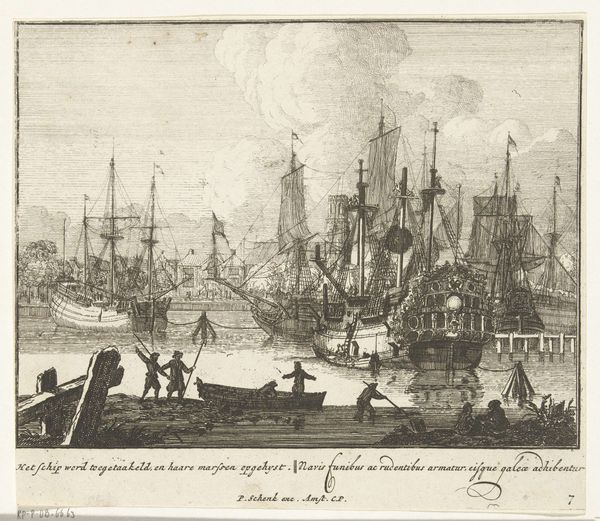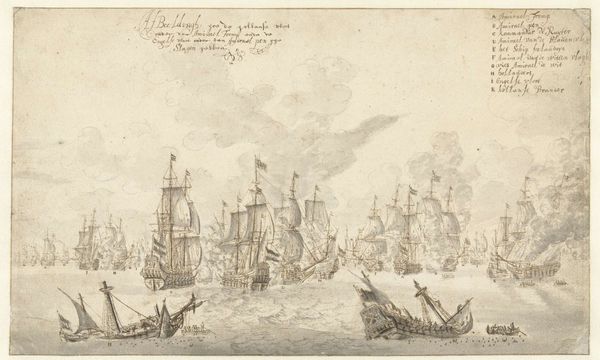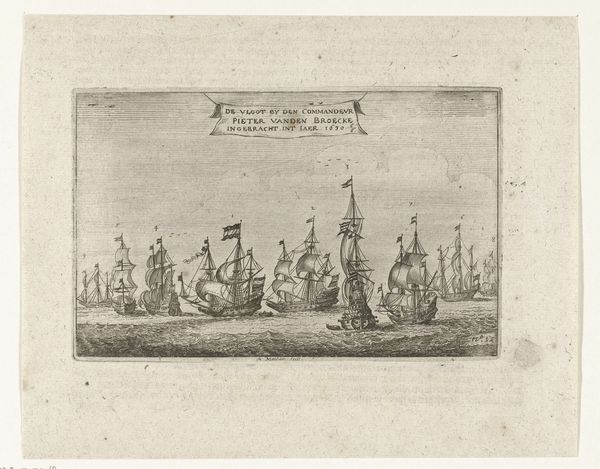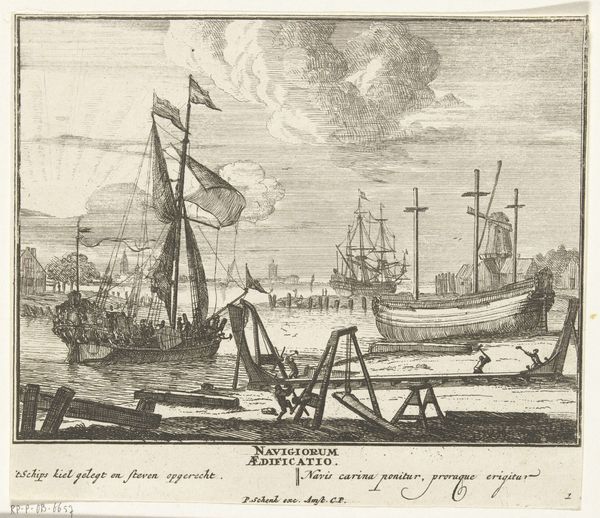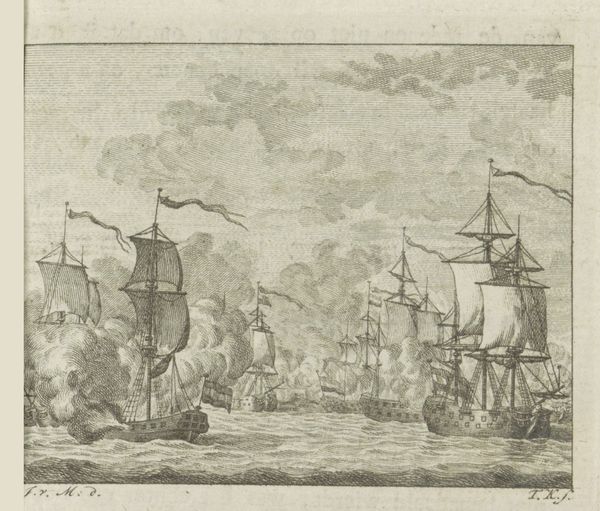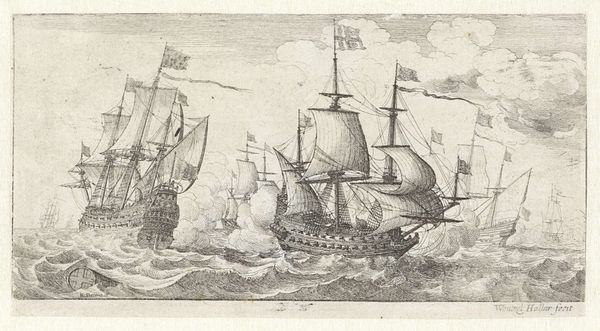
Schepen verwoest tijdens een zeeslag, plaat nr. 13, ca. 1700 1690 - 1710
0:00
0:00
print, engraving
#
narrative-art
#
baroque
# print
#
line
#
history-painting
#
engraving
Dimensions: height 163 mm, width 188 mm
Copyright: Rijks Museum: Open Domain
Curator: Looking at "Schepen verwoest tijdens een zeeslag, plaat nr. 13," a print dating roughly from 1690 to 1710, made by Sieuwert van der Meulen, I’m immediately struck by how incredibly active it feels for a static image. A sea battle, chaos rendered in delicate lines. What’s your first take? Editor: Utterly melancholic, I’d say! A very watery grave being depicted, of course, though a scene like this I find more morbid, a bit…wet-blanket. The detail of the print certainly pulls you in, and holds you with a kind of hypnotic horror. Curator: Absolutely. Van der Meulen really utilizes the engraving process here. Notice how the dense, cross-hatched lines not only define form and space, but also convey the immense amount of labour needed to produce multiple copies of such detail, for mass consumption of a sensationalist naval combat scene. The work involved echoes the monumental effort of shipbuilding. Editor: You are certainly right about the sensationalism. It does also make one think, I find, how a viewer back then, holding this print, may have related. War was ubiquitous back then. It likely tapped into something deeper, an awareness of constant upheaval and risk of sudden calamity for ordinary people, and a good conversation-starter too, one may guess. Curator: Exactly. The social context here is key. Prints like these circulated widely, impacting public opinion and providing visual representations of naval power struggles—it's both news and propaganda. They fueled consumption in multiple ways, depicting events and ideologies. Editor: And with the way it is made, there's a strange kind of beauty too. An acceptance and a reverence for things both awful and lovely, a morbid kind of elegance. I'm thinking of what Roland Barthes called the "punctum" or piercing detail... For me it is perhaps the tiny people scattered, tossed as flotsam within it. It is quite sobering when you consider all that. Curator: I think so too. We often divorce the process and materiality from our emotional understanding of an artwork, which I think we did not do here, allowing each dimension of this print, from its creation to its reception to provide us with great insight, each informing the other. Editor: Well put. Sometimes the collision of minds can light the ship ablaze in a whole new light. A bit on the nose, sure, but apt given this vivid artwork we dissected!
Comments
No comments
Be the first to comment and join the conversation on the ultimate creative platform.
